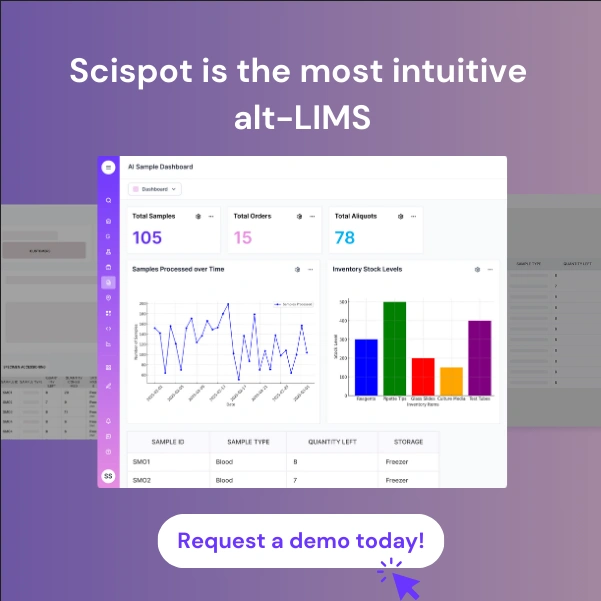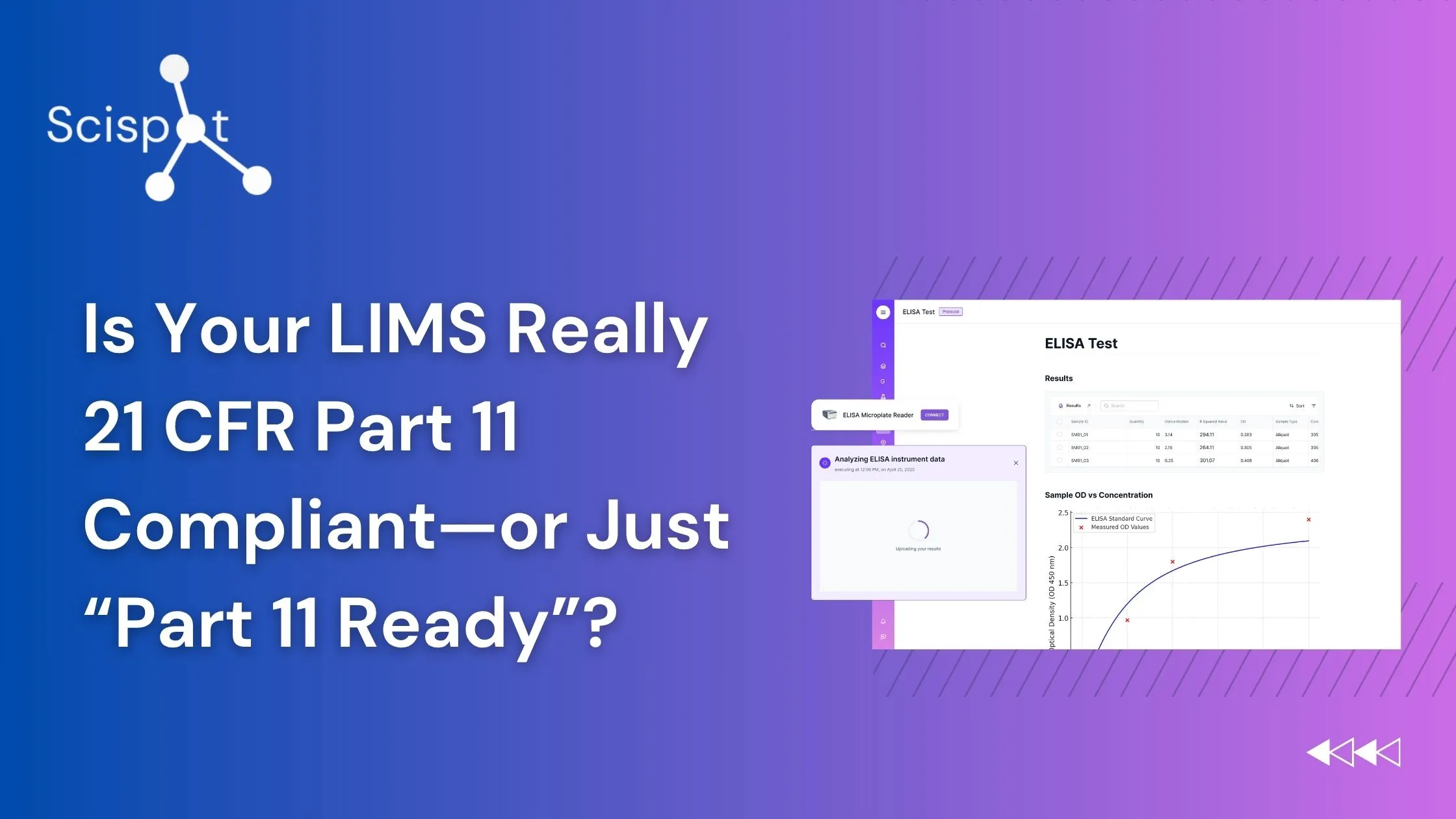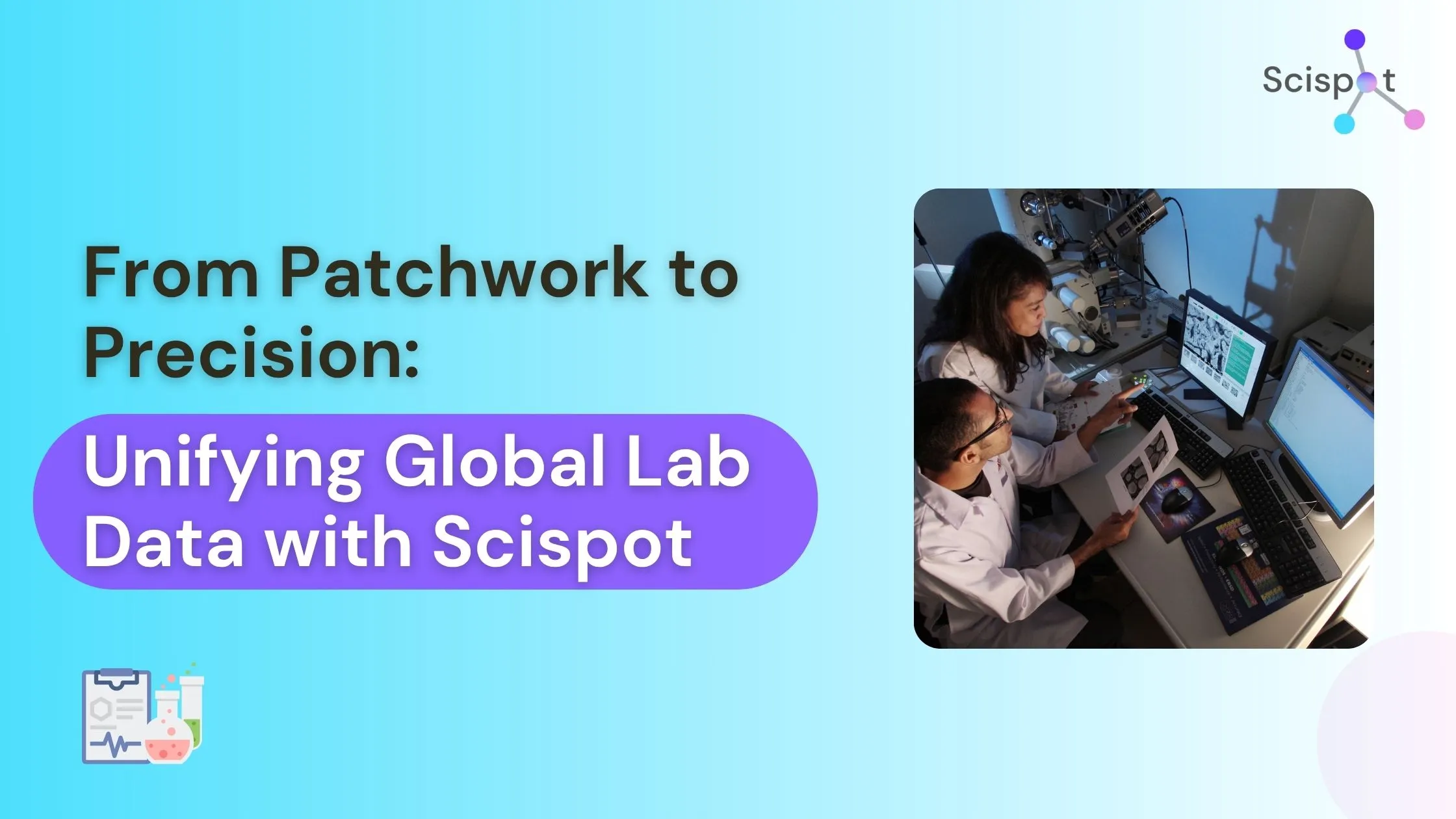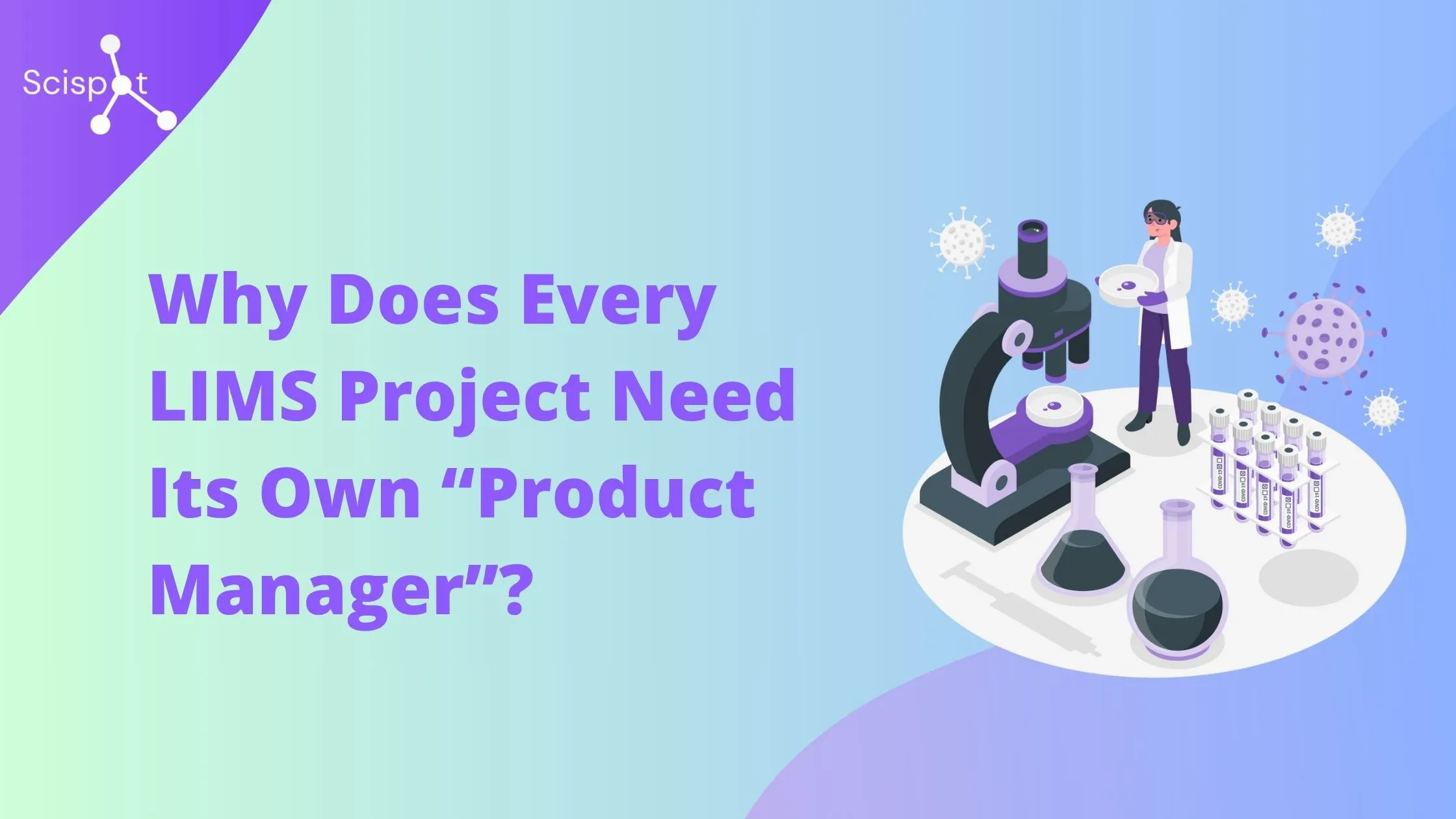Labs in 2025 are finding that CloudLIMS isn't keeping pace with modern laboratory needs. What began as a straightforward cloud LIMS for managing samples now shows limitations as workflows become more complex. Common complaints include workflow customization ceilings, frustrating manual data transfers, and escalating per-user costs. Users report issues like the system timing out after 20 minutes and losing unsaved work, limited flexibility, and connectivity challenges—all driving many labs to explore better alternatives.
Why Look for CloudLIMS Alternatives in 2025?
CloudLIMS has served as an entry-level LIMS for many labs, but industry trends and user feedback highlight key limitations. Digital labs today demand integration, flexibility, and speed. While CloudLIMS covers basic sample management, users report hitting limits when scaling up or customizing complex workflows. For instance, CloudLIMS imposes a maximum of 25 steps in a workflow, which many labs find restrictive.
Connectivity is another growing concern. Modern labs use multiple instruments and software, but CloudLIMS offers only modest integration capabilities. Many teams resort to manual data exports or Excel workarounds because connecting CloudLIMS with other lab systems isn't seamless. According to feedback, bridging CloudLIMS to certain instruments or databases often requires custom scripts or support intervention.
Performance and support issues also emerge in reviews. Some report slow loading times that delay time-sensitive tasks, while others mention support responses coming "overnight," slowing implementation when you're not in the same time zone as the support team.
If you're considering moving away from CloudLIMS, this comprehensive guide covers the top 10 CloudLIMS alternatives in 2025. We'll examine what each platform excels at, where they fall short, and help you determine which solution might be the best fit for your specific laboratory requirements.
Top 10 CloudLIMS Alternatives
1. Scispot
.png)
Scispot has emerged as the leading comprehensive lab operating system for teams looking to move beyond the limitations of CloudLIMS. Built specifically for modern laboratory environments, Scispot offers an API-first architecture that connects seamlessly with over 7,000 applications and 200+ lab instruments including popular systems like Sartorius Ambr, Eppendorf BioFlo, and Agilent LC-MS.
What truly distinguishes Scispot from other CloudLIMS competitors is their proprietary GLUE integration engine. This technology creates real-time data connections between your instruments and software, eliminating manual data transfer and reducing errors. Rather than piecing together multiple solutions, Scispot provides LIMS, ELN, inventory management, freezer management, and sample tracking all in one unified platform.
Multiple third-party review sites consistently rank Scispot as having the fastest implementation among LIMS providers. While CloudLIMS deployments can take several months, Scispot gets labs up and running in just 6-12 weeks. This rapid deployment is possible because of their no-code configuration approach that allows lab staff to customize workflows without programming knowledge or vendor assistance.
The Scispot interface is refreshingly modern compared to other systems in the market. Laboratory teams consistently mention how intuitive and clean the interface feels, which translates to less training time and faster adoption. As one scientist noted: "I appreciate how Scispot is easy to configure for our specific needs without requiring programming skills. We can adjust how it looks and works to fit our unique lab workflows."
For sample management, Scispot handles the complete lifecycle from intake through preparation, processing, analysis, and reporting with automated workflows that eliminate bottlenecks. The platform handles diverse scientific data types equally well, whether you're working with genomic sequences, analytical chemistry results, or clinical data.
Scispot's white glove support includes personalized setup, unlimited expert training, and ongoing consulting as standard. Their support team consists of actual scientists and computational biologists who help write custom scripts, configure database schemas, and suggest workflow improvements. Each lab receives a dedicated account manager and a private communication channel for quick responses when issues arise.
The platform continues driving innovation forward with Scibot AI, which transforms lab operations from navigating through menus to simply conversing with an AI assistant. This AI tool automates routine tasks, predicts resource requirements, and extracts insights from complex datasets. By handling data entry, analysis, and reporting automatically, researchers can focus on actual science instead of administrative tasks.
While Scispot is comprehensive, some users note that certain specialized features for highly niche applications may require additional configuration. However, the team's responsiveness to feature requests and ongoing development roadmap means these gaps are typically addressed quickly.
2. LabWare LIMS
LabWare LIMS positions itself as an enterprise-grade system and direct CloudLIMS alternative. The platform offers robust compliance tools and customization options that appeal to heavily regulated industries. Their comprehensive sample tracking, workflow automation, and reporting features are well-established and mature.
The downside? LabWare's implementation process is notably complex. Almost every user mentions the steep learning curve and substantial IT resources needed to implement and maintain the system. Their focus on on-premises deployments with custom programming creates significant technical hurdles for most organizations. The enterprise approach means higher costs and much longer deployment times compared to cloud-native solutions with faster implementation. If you need to get up and running quickly with minimal IT overhead, LabWare may not be your best option.
3. QBench
QBench markets itself as a laboratory operating system aimed at transforming how labs handle everything from order placement to sample processing and automated reporting. Their platform offers a configurable approach that attempts to adapt to each lab's unique workflows.
However, many CloudLIMS review comparisons reveal that QBench has limitations in data integration capabilities and instrument connectivity compared to more integration-focused platforms like Scispot. Users report challenges when trying to connect specialized instruments or implement complex workflows. While QBench works for basic LIMS needs, laboratories with sophisticated requirements often find themselves needing additional systems to fill functionality gaps.
4. SciNote
SciNote positions itself as an accessible LIMS solution with open-source roots. Their compliance and collaboration features work well for academic and government labs. The platform handles basic inventory management and protocol documentation with a clean interface.
Where SciNote falls short is in advanced automation capabilities, making it less suitable for biotech companies running high-throughput operations. Users consistently mention limitations in data analytics and integration options compared to platforms with API-first designs. The pricing is accessible for smaller labs, but growing organizations often end up needing additional systems to fill SciNote's gaps, creating data silos that slow down research.

5. STARLIMS
STARLIMS offers comprehensive LIMS capabilities for pharmaceutical, environmental, and public health labs. As a CloudLIMS competitor, it provides solid compliance features and quality management tools. Their platform covers sample tracking, storage, inventory management, and equipment scheduling.
The problem is complexity. STARLIMS implementation typically requires extensive consulting services, driving up the total cost substantially. Users frequently complain about the dated interface, which feels outdated compared to modern platforms. Labs without dedicated IT resources struggle to get the most out of STARLIMS, leading to operational inefficiencies and slower time-to-value compared to more intuitive, implementation-friendly alternatives.
6. Labguru
Labguru combines ELN and LIMS features in a web-based platform that serves as a viable CloudLIMS alternative. It works well for experiment documentation, inventory management, and tracking research progress. Labs with structured workflows appreciate its project management capabilities.
However, many users find the interface outdated compared to newer systems with modern design principles. The platform struggles with large datasets, creating bottlenecks in high-throughput environments. While Labguru offers decent customization options, labs with unique workflows often hit limitations when trying to adapt the system to their specific needs, unlike platforms with no-code configuration tools that empower labs to make changes without vendor dependency.
7. eLabNext
eLabNext offers an integrated ELN, LIMS, and workflow automation platform that facilitates collaboration. Their cloud-based approach enables flexibility, making it popular for teams needing access from multiple locations. The platform covers experiment documentation, sample management, and equipment tracking.
The limitations become apparent when labs need deeper customization. Users report challenges with search capabilities and organizing complex data. Many specialized integrations require significant configuration work, unlike solutions with built-in integration engines that simplify connections to instruments and other software. While eLabNext works for basic needs, growing research organizations often outgrow its capabilities and look for more adaptable alternatives.
8. LABWORKS LIMS
LABWORKS LIMS offers solid sample management capabilities and reasonable regulatory compliance features, with a particular focus on quality control laboratories and testing operations.
When compared in CloudLIMS review forums, LABWORKS is often noted for its slightly more accessible user interface but still presents many of the same implementation challenges as other legacy systems. The system requires significant configuration to match laboratory workflows and ongoing maintenance to remain aligned with evolving requirements. LABWORKS may represent a lateral move rather than a significant advancement for laboratories seeking alternatives to CloudLIMS.

9. NovoPath 360
NovoPath 360 represents another cloudlims alternative focused primarily on anatomic pathology and clinical pathology laboratories. The platform offers digital pathology tools, billing integration, and compliance features designed for diagnostic environments.
Where NovoPath falls short is in research versatility. Its specialized focus on pathology creates limitations for labs conducting diverse research across multiple scientific disciplines. Users report that while excellent for pathology workflows, the system requires significant customization for other applications. The learning curve can be steep, especially for teams without pathology backgrounds, making platforms with more intuitive interfaces like Scispot more attractive for multidisciplinary laboratory environments.
10. CrelioHealth LIMS
CrelioHealth LIMS targets diagnostic and clinical laboratories specifically, focusing on workflow management for diagnostic procedures. The platform includes features for patient registration, sample collection, and report generation.
However, its specialized focus makes it less suitable for research laboratories or organizations working across multiple scientific disciplines. Several CloudLIMS review comparisons note that CrelioHealth's interface, while functional, lacks the intuitive design of more modern alternatives. Biotech and research organizations typically find that more versatile platforms better accommodate their diverse workflow requirements and data types.

Integration Capabilities: The Backbone of Modern Lab Operations
In today's connected laboratory environment, integration capabilities have become the decisive factor separating truly useful lab informatics solutions from glorified data repositories. Modern labs operate complex ecosystems of instruments, software applications, and external collaborators that must work together seamlessly to drive research forward.
CloudLIMS review forums consistently highlight integration challenges as a major pain point. Connecting instruments and third-party applications often requires expensive custom development work, creating data silos that hinder collaboration and limit analysis. In contrast, API-first architectures have become essential for lab informatics, enabling smooth connections between different systems.
Scispot's GLUE integration exemplifies this modern approach, offering one-click integration with major scientific applications and instruments. This technology connects labs with over 7,000 applications and 200+ lab instruments without complex coding or vendor intervention. A Scispot user recently shared: "I appreciate how easily I can connect all my applications, instruments, and databases with Scispot GLUE." This capability transforms previously isolated systems into unified data environments where information flows automatically between instruments, analysis tools, and reporting systems.
For labs struggling with integration challenges, platforms like Scispot offer a compelling alternative by eliminating data silos and creating connected ecosystems. Automated data transfer between systems not only reduces manual entry errors but also accelerates research by removing bottlenecks in data processing workflows. This integration-first approach has become essential for labs looking to leverage their data for advanced analytics and AI applications.
AI-Driven Laboratory Management: The Future of Research
AI is rapidly transforming how laboratories operate, evolving from an experimental technology to an essential capability. In 2025, AI-enhanced lab systems are helping research teams automate routine tasks, extract insights from complex datasets, and accelerate discovery timelines. This shift represents the most significant advancement in lab informatics since the transition from paper to digital records.
Traditional platforms like CloudLIMS have struggled to incorporate AI effectively, often adding it as an afterthought rather than building it into the core system. This approach limits AI's potential to transform lab operations and fails to address the growing need for intelligent automation in research.
Scispot has embraced AI as a fundamental component through Scibot, an AI lab assistant that transforms lab work from navigating menus to having conversations with an intelligent system. This allows scientists to interact with experiments and data in real-time, execute workflows more efficiently, and make faster decisions based on AI-enhanced insights. Users can simply instruct Scibot to create cell culture experiments, load plates, send plates to liquid handlers, or prepare samples for sequencing.
Scibot can also generate advanced analyses like growth curves, dose-response curves, and specialized analytics including pharmacokinetic modeling and flow cytometry data analysis. As one lab director using Scispot explained, "It elevates our lab capabilities to another level and goes beyond traditional LIMS by using AI to bring our data to life. We're getting insights we never had access to before, completely changing how we manage scientific data."
For labs looking to move beyond the limitations of CloudLIMS, AI-enhanced alternatives offer a path to greater efficiency, deeper insights, and faster discovery. As AI capabilities continue growing, the gap between traditional and AI-enhanced platforms will only widen, making this a crucial consideration for labs evaluating CloudLIMS alternatives.

Key Considerations for Selecting the Right CloudLIMS Alternative
When evaluating alternatives to CloudLIMS, research organizations should focus on these critical factors that directly impact success and long-term value:
- Implementation Timeline: Traditional LIMS platforms typically require 6-12 months to fully implement. Modern alternatives like Scispot offer much faster deployment, typically 6-12 weeks, allowing organizations to see value much sooner.
- Configuration Flexibility: The ability to adapt workflows without vendor assistance has become essential for research teams working in dynamic environments. No-code configuration capabilities let laboratories evolve their systems alongside changing research needs without paying for additional development.
- Integration Capabilities: Today's laboratories need seamless connections between instruments, software systems, and external collaborators. Platforms with built-in integration frameworks eliminate data silos and create unified research environments where information flows automatically between systems.
- User Experience: Adoption rates directly impact ROI for lab informatics systems. Intuitive interfaces reduce training time and resistance to change, increasing the chances of successful implementation and continued usage.
- Support Quality: Implementation and ongoing support quality significantly influence long-term satisfaction. Platforms offering white glove support with dedicated account managers and domain experts provide more value than those with generic technical support.
- AI Readiness: As AI becomes increasingly central to research operations, platforms designed to leverage AI capabilities offer significant advantages in automation, insight generation, and decision support.
- Scalability: Research informatics needs grow and change over time. Platforms with cloud-native architectures can scale smoothly without performance problems, avoiding the costly migrations often required with traditional systems.
By carefully evaluating these factors, research organizations can select the CloudLIMS alternative that best fits their specific needs and future growth plans.
Conclusion
In 2025, laboratories simply aren't willing to tolerate inflexible systems, complex implementations, and unpredictable costs anymore when looking for alternatives to CloudLIMS. While platforms like LabWare, QBench, and STARLIMS each have their strengths, they also come with significant drawbacks, whether that's rigid workflows, outdated interfaces, steep learning curves, or costs that escalate as you grow.
For labs seeking a modern, future-proof solution that evolves with their needs, Scispot stands out from other CloudLIMS competitors with its comprehensive capabilities and flexible architecture. Its combination of rapid implementation, intuitive interface, and seamless integration capabilities addresses many of the pain points that have frustrated CloudLIMS users.
With its clean interface, powerful GLUE integration engine for connecting lab instruments and third-party applications, and AI-powered Scibot assistant, Scispot helps labs scale without the headaches of data lock-in or surprise cost increases. As one Scispot customer expressed: "Before, our chemistry work required a specialized notebook and LIMS, and our biology work was scattered everywhere. With Scispot, everything's in one place now. It's incredibly user-friendly for both our bench scientists and computational team."
Scispot isn't just another CloudLIMS alternative. It's a complete lab operating system that helps your research team thrive today and in the future.
.gif)











